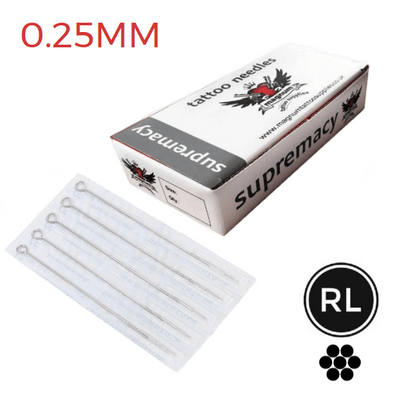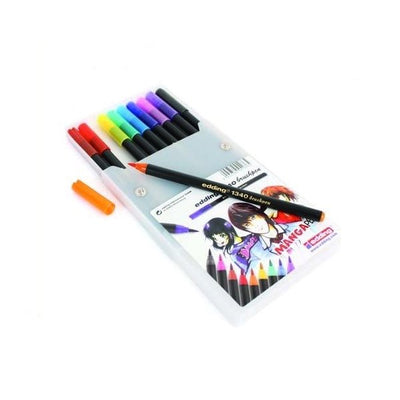In tattooing, safety is as important as the art itself. Every tattoo artist has a big responsibility to keep their clients safe. Sadly, sometimes the excitement of getting a tattoo makes people forget about the risks like infections, diseases, and allergic reactions. This can turn a happy moment into a serious problem.
As a tattoo artist, it's crucial to put hygiene first. This means making sure everything is clean and safe, from the needles to the way you take care of the tattooed skin. This guide will show you the basic tattoo hygiene practices every tattoo artist should follow to protect their clients and keep their art safe and respected.

Are tattoos safe?
Tattoos can be safe when done by professional artists who adhere to strict hygiene practices. These practices include using sterilised equipment and disposable needles, wearing gloves, and cleaning the skin with antiseptics before tattooing. Risks exist if hygiene practices are not followed.
However, by choosing a reputable artist and tattoo studio that follows health guidelines, the risks associated with getting a tattoo can be significantly minimised, making tattoos a safe form of body art for most people.
Basic tattoo hygiene practices for tattoo artists
1. Use of cleaning agents and disinfectants
As a tattoo artist, it's crucial for you to sterilise all non-disposable equipment, including needles and tubes, thoroughly.
The most effective way to achieve this is by using an autoclave, which employs steam under pressure to eliminate all microbial life, even the most resilient spores. After each tattoo process, you should clean the equipment to remove any visible debris, disinfect it, and then autoclave it.
To further minimise the risk of cross-contamination, using disposable equipment that can be discarded after a single use is highly recommended.
2. Wearing protective gloves
You must wear disposable gloves as part of your personal protective equipment throughout the tattooing process to prevent the transmission of pathogens. It's important to change gloves between clients, after any interruption that could lead to contamination, and immediately if the gloves become torn or punctured.
You should prefer nitrile gloves over latex to avoid potential allergic reactions in some clients and artists.
3. Opting for disposable materials
To significantly reduce the chance of spreading pathogens between clients, you are advised to use disposable materials whenever possible. This includes using needles, disposable ink caps, and gloves once and then disposing of them.
This practice ensures that each client is exposed to new, sterile equipment, greatly enhancing safety and hygiene.
4. Application of antiseptics and ointments
Before and after the tattooing process, applying antiseptics and ointments to the skin is critical in preventing infections.
Antiseptics help slow down or stop the growth of bacteria, protecting the skin from infection during and after the tattoo is applied. Ointments can create a protective barrier, keeping out bacteria while the tattooed skin heals.
5. Single-use supplies
Ensuring that items such as needles and ink caps are used only once before being discarded is fundamental to maintaining the highest level of hygiene in tattooing. This eliminates the risk of using the same item on multiple clients, which could lead to the transfer of blood-borne pathogens. Single-use supplies are designed to be safe and sterile, offering peace of mind to both the client and the artist.
6. Proper disposal in sharps containers
After use, you must dispose of all sharp objects like needles carefully in designated sharps containers. These containers are designed for the safe disposal of items that could potentially cause injury or spread infection.
By using sharps containers, you prevent accidental needle-stick injuries and ensure that these hazardous materials are disposed properly to protects public health and safety.
7. Using topical skin cleaners
Before you begin tattooing, you'll need to prepare the skin by applying topical cleaners directly to the area. This crucial step ensures the skin is free from germs and ready for tattooing. By actively cleaning the skin with these solutions, you create a sterile surface, significantly reducing the risk of infection and aiding in the healing process of the tattoo.
8. Cleaning with an ultrasonic cleaner
To ensure your tattoo equipment, like your tattoo machine, is thoroughly sanitised, use an ultrasonic cleaner. This device utilises high-frequency sound waves in a liquid solution to reach and clean every part of your equipment, including those tiny areas that are impossible to clean by hand.
Using an ultrasonic cleaner guarantees that even the most intricate parts of your tools are free from contaminants. This cleaning method is essential for maintaining top-notch hygiene, preventing the risk of cross-contamination, and safeguarding both your health and that of your clients.
Potential risks of tattoo

Infection
A common risk associated with tattoos is the chance of developing an infection at the tattoo site. This can happen when equipment is not sterilised properly or aftercare instructions are not followed correctly. Symptoms of an infection include swelling, redness, pain, and the discharge of pus.
Bloodborne illnesses
Tattoos can potentially expose you to bloodborne illnesses if the needles used are contaminated. Diseases such as hepatitis C, hepatitis B, and HIV can be transmitted if needles that have been used on an infected person are reused without proper sterilisation.
Scarring
Improper tattooing techniques or poor healing can lead to scarring. This might not only affect the appearance of the tattoo but can also lead to keloids, raised areas of scar tissue that grow beyond the original site of the skin injury.
Allergic reactions
Some tattoo clients might experience allergic reactions to the ink used in tattoos. These reactions can occur immediately after the tattoo is applied or years later, manifesting as itchy rashes at the tattoo site. Certain colours, like red and yellow, are more likely to cause allergic reactions.
MRI interference
Although rare, tattoos can affect magnetic resonance imaging (MRI) tests. Some tattoo inks contain metal, which can react to the MRI's magnetic field, causing swelling or warmth in the tattooed area during the procedure. Additionally, tattoos might lead to issues with MRI image quality, although this is less common with modern techniques.
Follow these tattoo hygiene practices
To wrap things up, remember that keeping things clean in tattooing is as important as the art you create. By sticking to these good hygiene practices, you're looking out for your clients' health and showing them they can trust you. Clean tools, one-time-use materials, and proper aftercare are key. When you make hygiene a top priority, your work shines brighter, and your clients leave happy and safe. Keep it clean, and your tattooing will earn the respect and trust it deserves.



























































 Studio supplies
Studio supplies












 Power & batteries
Power & batteries








 Aftercare
Aftercare





















 Apprentice
Apprentice


 Piercing & jewellery
Piercing & jewellery







 PMU supplies
PMU supplies




 New arrivals
New arrivals
 Gift vouchers
Gift vouchers
 Shop all
Shop all
















































